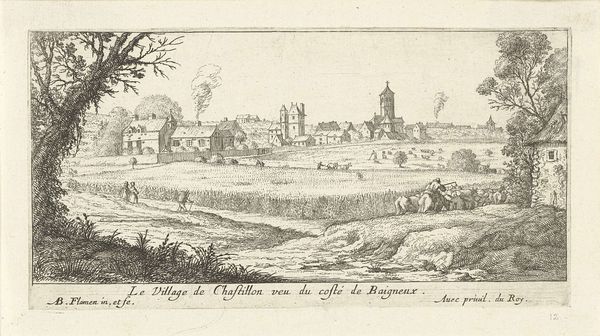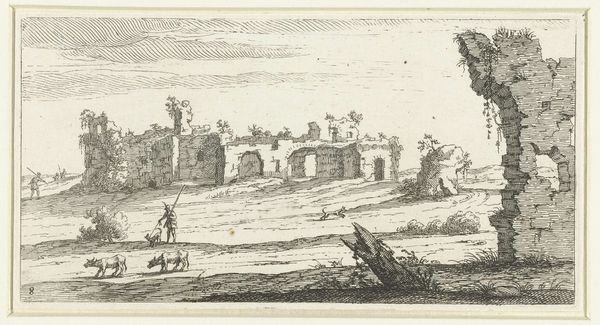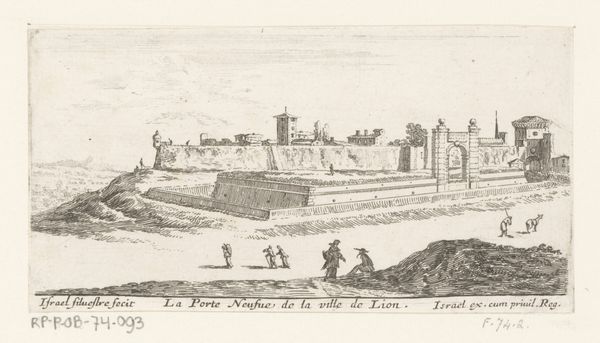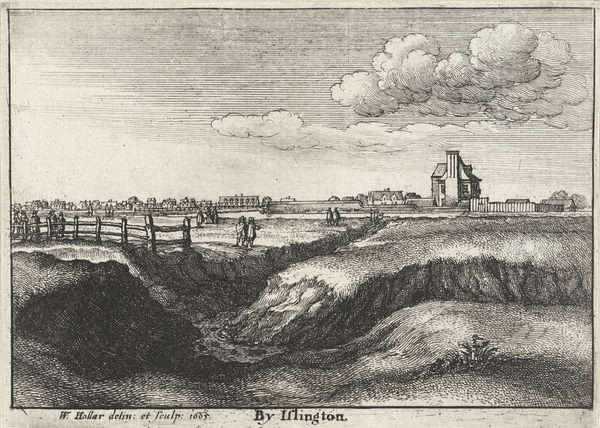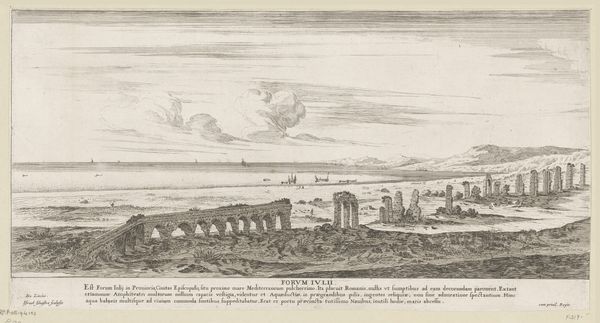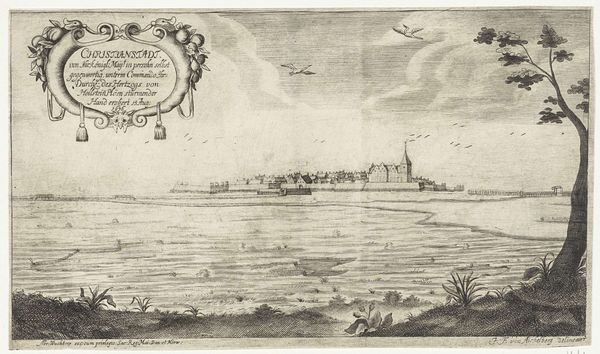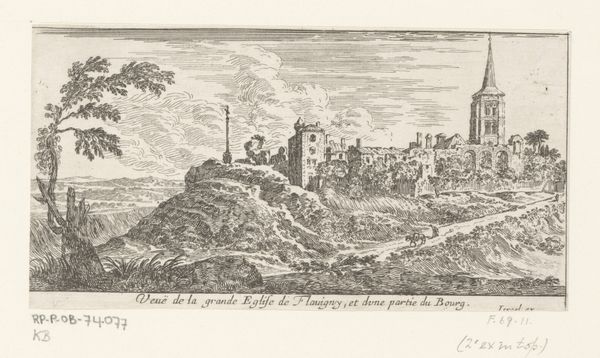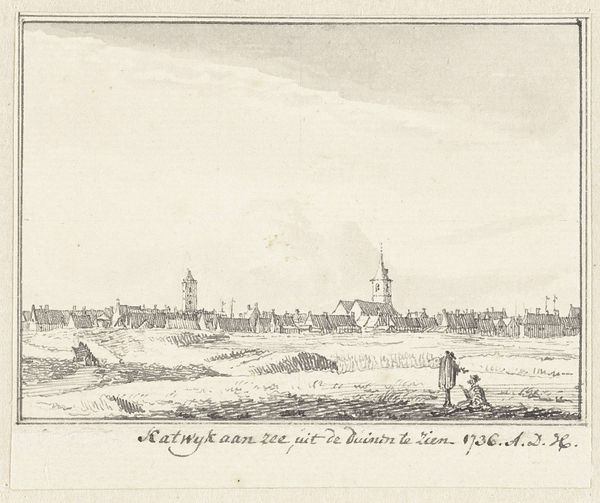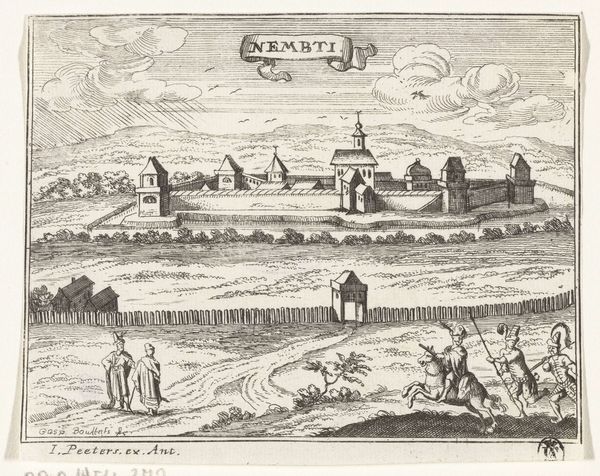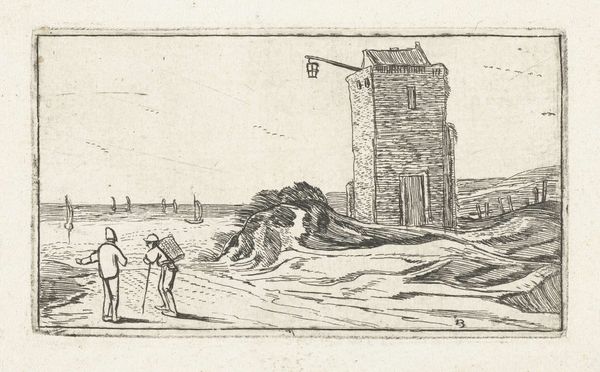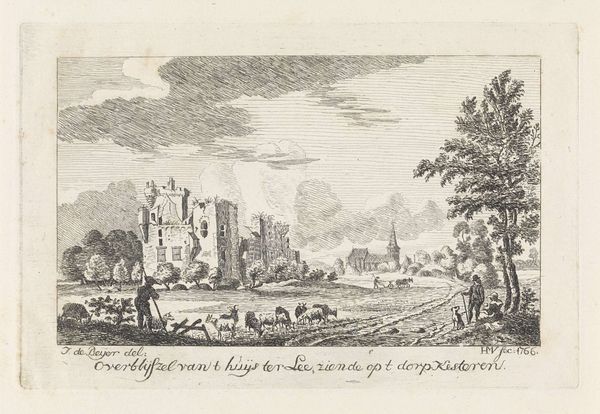
print, engraving
#
baroque
# print
#
landscape
#
cityscape
#
history-painting
#
engraving
Dimensions: height 115 mm, width 263 mm
Copyright: Rijks Museum: Open Domain
Curator: Here we have "View of Suez," a print made around 1672 by Gaspar Bouttats. What are your initial thoughts on this particular depiction? Editor: Stark! The almost monochrome palette enhances the arid landscape. It feels less like a celebration and more like documentation, the scale balancing the granular details and breadth. Curator: Absolutely. Given Bouttats’ profession as an engraver and printmaker, the piece reflects not just artistic vision but the realities of artistic labor at the time. Note the precision demanded by the engraving medium. Its accessibility and transportability played crucial roles in circulating information and perspectives, especially relating to colonial activity in the area. Editor: Speaking of which, formally, the artist segments space ingeniously—the composition pulls the eye. Figures recede to emphasize the fort’s structural permanence against a changeable desert backdrop. I read this linear perspective as contributing symbolic importance to the stronghold depicted, emphasizing dominance over place through pictorial structuring. Curator: That dominance underscores its strategic economic function. Remember, during this period the Dutch East India Company dominated global trade networks. Prints such as this become tools—disseminating visual knowledge and projecting colonial ambitions to European audiences, therefore also shaping public discourse and impacting financial investments in trade. Editor: Yes, it reflects period-specific concerns relating to cartography, exploration, or what was believed at the time… However, the formal qualities lend permanence that persists despite contextual change—the interplay of solid, ruled construction versus granular mark-making. Curator: An apt observation that points to both material realities of its production and wider historical conditions… Thank you, both our perspectives give viewers insightful tools to grasp the historical moment captured by Bouttats and how engravings like this shaped Dutch commercial consciousness during the 17th century. Editor: Agreed. Examining visual texture enriches understanding! The structural order imposed speaks volumes regarding space, place, and perhaps also the human cost exacted throughout the construction depicted—it's a compelling dialogue!
Comments
No comments
Be the first to comment and join the conversation on the ultimate creative platform.
